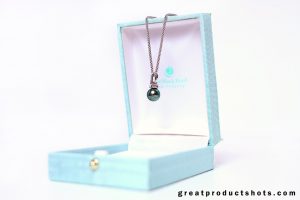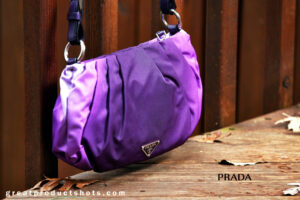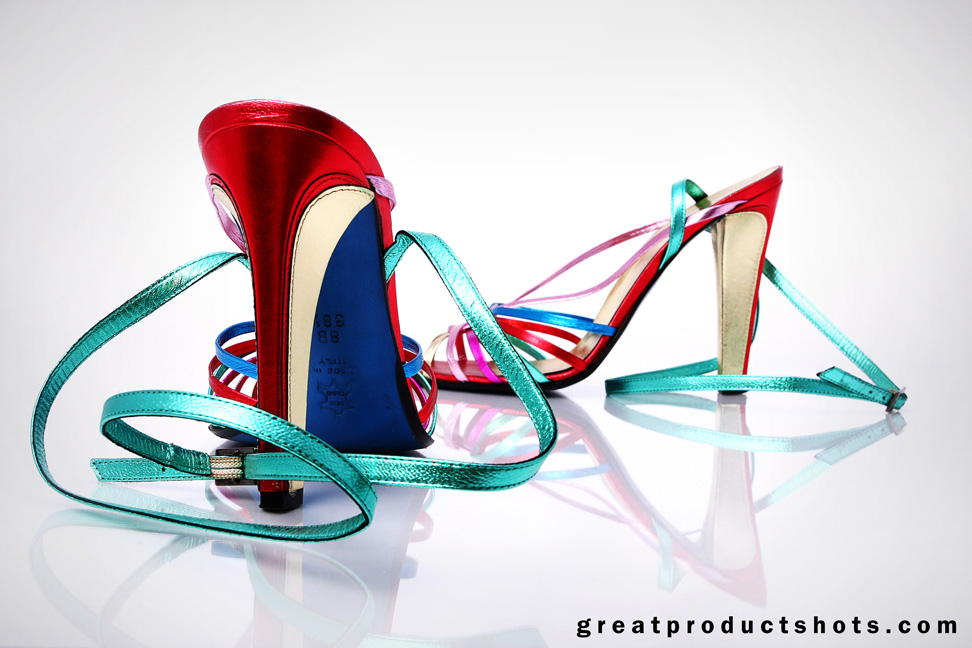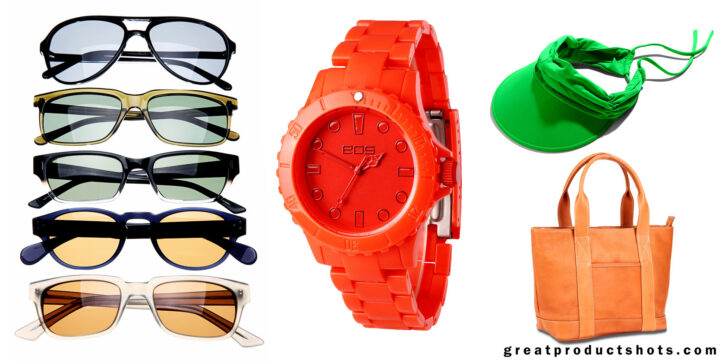Editor’s Note: Thanks to Peter Alessandria, photographer at GreatProductShots.com for the following guest post about DIY product photography.
1. DIY Product Photography: The camera
DON’T use your cellphone. Please. It’s not because I am a camera snob. The main problem with your cellphone camera is the lens. The wide angle can distort the view of your product. Since you spend thousands of dollars acquiring, designing, developing, prototyping and/or manufacturing your product, you want it to look its best, and the lens on the cellphone will not do it justice. It just can’t come close to the sharpness, clarity, and perspective you’d achieve with a decent camera. Plus, if you don’t have enough light, cellphone pictures look grainy.
DO get a nice camera. If you’re serious about selling and want to present your product in its best light, make the investment. You don’t need to spend more than $300-$400. Buy (or borrow) a great entry-level, interchangeable lens camera, such as a DSLR. I bought my 10-year-old niece a refurbished Canon Rebel SL-1 (including lens) from the Canon USA website for less than $300, and I could probably do 80% of my professional work with this camera if I had to. Afraid of using the wrong settings on your fancy new camera? Shoot in automatic mode, and the photos will still be stunning.
2. DIY Product Photography: The background

DON’T choose a cluttered or distracting background. Shooting your products on your desk, kitchen counter, or in the garage won’t cut it! The product needs to stand out and look like it’s the only thing that matters. Even if I’m selling my own used stuff on Craigslist, I always shoot on an uncluttered, attractive background with proper lighting.
DO use a white background. This works in presenting your product since all the emphasis is on the product itself, without any distractions. White background shots are standard on almost every e-commerce website and product catalog out there. They convey a lot of useful information to your customers and aid in the purchasing decision. However, don’t use a bed sheet! You want a smooth, sweeping look. Instead, go to the local art store and get some white drawing or tracing paper on a roll. Put the roll high up on a shelf and let it drape down over your shooting area. Place your product on top of the paper to create a smooth, seamless background.
3. DIY Product Photography: Bonus shots

DON’T miss out on the opportunity to create a video of your product in use. Video can convey lots of information in a short time. Emphasize the experience people will have when they use or purchase your product. But keep the clips short – one minute or less should do. That DSLR you purchased in my first tip can shoot video – or just use your cellphone. There, I said it.
DO consider “environmental” shots. Once you get your white background shots done, do some photos that show the product in use or being enjoyed by people. You may be able to use your own home or office or a local park as your set. Models can be friends or family – just make sure they look happy! You’re really selling an experience when you sell a product. People buy it to solve a problem or enhance their lives. Models are an effective way to convey the emotions people can expect when they buy your stuff.
4. DIY Product Photography: Using angles
DON’T rely on one boring, static shot to sell your product. Offer different angles to give customers the big picture. Don’t always shoot from eye level. See what your competitors are doing with their photos, and emulate the best.
DO shoot multiple angles. A little trick to enhance the look of a product is what we professional product photographers call the “hero shot.” I want my clients’ products to look important; this means shooting products from a low angle. Orson Welles did it in Citizen Kane to make his characters look larger than life, and I do it for my clients. Get the camera at or below the surface you are shooting on, and angle the camera up. You can try higher angles – but not too high. Of course, don’t forget shots from the right, left, and behind, and if appropriate, close-ups of any special features. Also, consider shots of any labels or packaging that might influence your customers to buy.
5. DIY Product Photography: Lighting

DON’T use the built-in flash. Please! Direct flash is the most unflattering light for both people and products. If it’s the only light you have at your disposal at Mom’s birthday dinner or your kid’s dance recital, so be it. But when you’re producing photos to sell your products, you need to up your game.
DO use good lighting – there’s really no way around this one. The Greek derivation of the word photography means “to paint with light.” You can have the best camera in the world, but if the lighting sucks, so will your pictures. If you don’t have enough light, digital photos can look grainy. But good lighting does more than produce smooth, sharp pictures: it makes for interesting pictures. And interesting pictures make for more sales. While I have thousands of dollars worth of lighting equipment in my studio, you don’t necessarily need all that. Start simple: get some desk lamps at IKEA or work lights at Home Depot if you don’t already have them. Then make sure the White Balance on your camera is set to Auto. The key to good lighting is to use at least two lights and place them on the left and right of your product. Never light the product straight-on. Play with different angles to see what looks most interesting, and be sure to shift the lights or your camera angle to avoid glare if your product has a shiny surface.
BONUS DIY PRODUCT PHOTOGRAPHY TIPS FOR SOCIAL MEDIA:
• Make it easy for people to share your photos on social media. Post high-resolution images on your website and social media pages. While you don’t want to slow down the load times for your website, small, hard-to-see photos won’t help you sell more product. Also, don’t disable the right-click function on your website photos. This will make it easy for people to save, copy, and paste your photos.
• Keep all your photos in one gallery where people can easily share them with friends via a link, and/or provide social media Share buttons for each of your photos.
• Post your photos often, and encourage followers to comment and share them. Always try to respond to comments – it makes them feel like you care (a simple “thank you” will usually suffice). But be careful not to always be selling on social media – you want to engage people and generate interest, rather than turn them off with a constant sales pitch.
• Encourage people who purchase your product to take their own photos of the product in use and then share those photos. You may also want to consider giving customers a centralized place to post or upload their product photos. You want to create a certain image of your product and by doing that you’ll be able to figure out more about your audience. This includes their behavior and geography, which will allow you to market or cater your images to them more specifically.
If you care about your product, it’s always worth it to spend a little extra time and money to take great photos of it. I can tell you after more than 15 years in the business, good photos always lead to more sales.
Peter Alessandria is a professional fine-art and commercial photographer based in the New York/New Jersey area. He has won 42 awards for his work, and his photos have been published in newspapers and magazines around the world. He has been featured on NBC-TV NY and other news and social media outlets. He shoots all kinds of products for his clients, including cosmetics, clothing, computers, household products, and jewelry. See all his product photography work on his website GreatProductshots.com.



